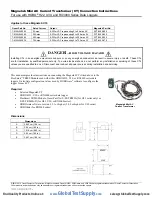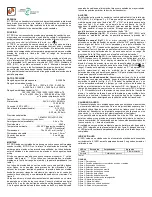
Enabling/Disabling USB CAT/AUDIO.
USB CAT and USB AUDIO is always enabled in current firmware (2.0.0 or newer). You just
need to connect PC and mcHF.
•
Connect your PC to the mini-USB port.
•
Linux machines will now automatically detect both the virtual com port as
/dev/ttyACM? and also the audio is automatically detected. Depending on the
Linux sound package you are using, you may not see the capture device (sound
in) in all programs. Pulse Audio does work, ALSA seems to have trouble seeing
the capture interface. This may improve in future. Make sure that not programs
like "modemmanager" access your device. See FAQ below.
•
Windows machines should load the audio in and out driver without problems.
However, the virtual COM port needs special care on all Windows Version up to
and including Windows 8.1. Windows 10 loads the right drivers automatically. All
Windows version from XP on can operate the serial after installation of a "special"
driver information file. See below for instructions.
Programs known to work
Programs for controlling the rig
All HAMLIB based programs should be able to control the main aspects if the FT-817 is
available as choice. Baud Rate / Communication speed is not relevant. To transmit use
the CAT PTT option if possible. RTS/DTR based PTT control is not supported. Please note
that the FT-817 emulation is not complete. Especially programs reading and writing to
EEPROM locations in order to activate certain specific FT-817 function will not be able to
do so for obvious reasons. Very important EEPROM locations can be implemented if the
respective functionality is present in the mcHF. Do it by yourself and contribute or ask
for assistance if CAT control does not work as expected.
•
Omni-rig using FT-817 protocol
•
HamRadioDeluxe 5.x using FT-817 protocol
•
DXLabs Suite using FT-817 protocol.
Programs used to receive/transmit digital modes











































